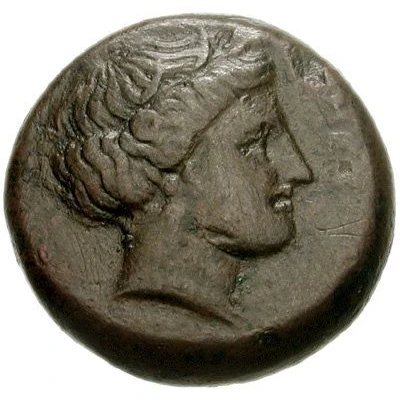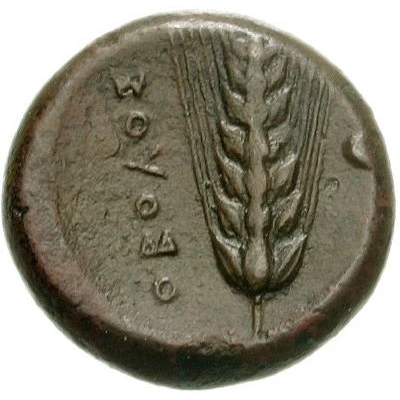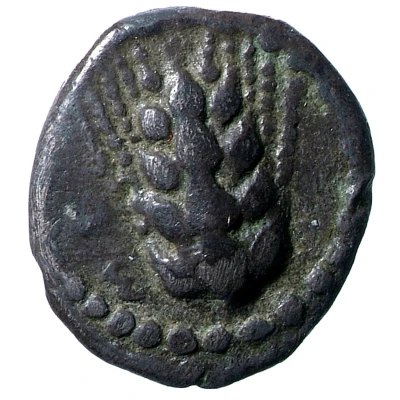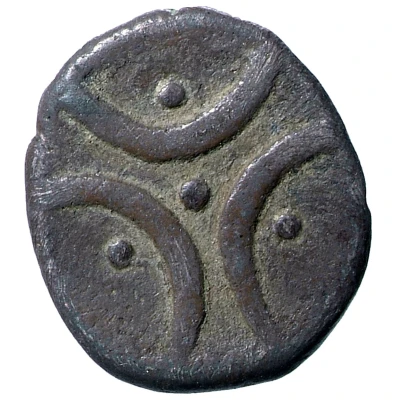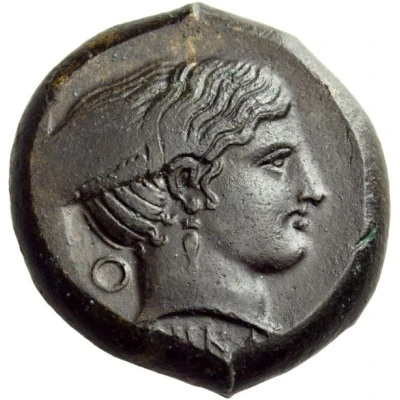
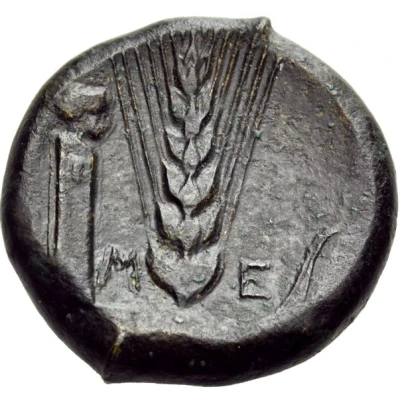

© Nomos AG
Obol 425 BC - 350 BC
| Bronze | 9.64 g | 21.5 mm |
| Issuer | Metapontion (Lucania) |
|---|---|
| Type | Standard circulation coin |
| Years | 425 BC - 350 BC |
| Value | Obol (⅙) |
| Currency | Drachm (540-200BC) |
| Composition | Bronze |
| Weight | 9.64 g |
| Diameter | 21.5 mm |
| Shape | Round (irregular) |
| Technique | Hammered |
| Demonetized | Yes |
| Updated | 2024-10-10 |
| Numista | N#403896 |
|---|---|
| Rarity index | 100% |
Reverse
Six-grained ear of barley with leaf to right; in the field to left, herm to right.
Script: Greek
Lettering: Μ - Ε
Comment
Johnson, Bronze, 5.
Interesting fact
The Obol coin was used as a form of currency in ancient Greece, specifically in the city of Metapontion (Lucania) during the 5th century BC. The coin features an image of a leaf on one side and a helmet on the other, signifying the importance of agriculture and warfare in ancient Greek society. The Obol was also known for its unique shape, which was designed to be easily recognizable and difficult to counterfeit. Despite its small size, the Obol played a significant role in the economy of ancient Greece, facilitating trade and commerce between cities and regions.
